What is the Best Risk to Reward Ratio for Day Trading Stock Market and Forex?
Official Trading Rush Website: https://tradingrush.net
Download Official Trading Rush APP (Thanks): tradingrushapp
Support the Channel on Patreon (Thanks): tradingrush
Trading Merch for Best Traders: stores/trading-rush
Watch More Videos:
MACD Trading Strategy tested 100 times : nmffSjdZbWQ
Trading Strategies Tested 100 Times : playlist?list=PLuBdu9GKAoP4shAZd6QnM5BJUy1-IcnyD
Trading Strategies : playlist?list=PLuBdu9GKAoP6MEtX7stfzTGx62M5r3F4Z
Trading Tips and Mistakes : playlist?list=PLuBdu9GKAoP6lPl2txSXE8AlkhiwgWU2O
Download Excel Sheet for Day Trading : fLKd7uKZOvA
Subscribe For More Videos.
What is the best reward risk ratio? What should you use? What reward to risk ratio is best for your trading strategy. Lets find out! Hopefully this video will help out the new traders.
Use reward risk ratio higher than one, you have probably heard that somewhere before. But using a very high reward to risk ratio can turn your profitable strategy into a money losing machine. Let me explain.
If you are new to trading, and if you have a trading strategy that produces a win rate of higher than 50 percent with 1 is to 1 reward risk, do not use a reward risk ratio higher than 1. If you do, you will increase your chances of losing trades multiple times in a row. Let me give you an example.
Lets say, you enter a long trade, and you set the stop loss according to your stop loss strategy. Now, to get a 1 is to 1 reward risk ratio, you simply set your profit target at the same distance as your stop loss. As you can tell, this is a 1 is to 1 reward risk trade.
Now, every trade is like a coin toss. The price will either go in the upward direction, or in the downward direction. And with a reward risk of 1 is to 1 including commission, there is a 50 50 chance of winning as you will either lose or win the same amount.
You have probably seen a similar chart that shows the win rate required to break even. As a new trader, Instead of looking only at the break even percentage, you should also pay attention to the probability of losing multiple times in a row with different reward risk ratios. Here's a modified chart. As you can see, the higher the reward risk ratio, the higher is the probability of getting multiple losing trades in a row. This is because, price has to travel more distance to reach your profit target, than it has to reach your stop loss. And as you already know, most of the time market is moving sideways. To get a very good reward risk ratio like 3 to 1, the price has to be in a very strong trend, and that doesn't happen all the time.
So what is the best reward risk ratio in trading?
Well, it depends on what you are trying to achieve. If you are looking for consistent profit, you reward risk ratios between 1 to 1 and 1.5 to 1.
If you can handle the possibility of losing multiple trades in a row, use reward risk ratios that are higher than 2.
Since most Human Minds would prefer winning instead of losing, it is better to use the lower reward risk ratios, especially if you are just starting out. This way, your mind will be at peace while trading, and you won't get paranoid by looking at the list of losses on your trading platform.
You have probably seen some traders move their stop loss to break even once the trade crosses 1 is to 1 reward risk ratio. They do that to remove the possibility of losing the trade when it has already crossed the 1 is to 1 reward risk ratio. Unless there is a strong catalyst that is moving the price in a strong trend, the probability of the trend reversing is higher, since most of the time market moves in a range. By moving the stop loss to break even, traders are simply eliminating the chances of losing money if the direction of the trend reverses, before the price reaches their higher reward risk ratios like 3 is to 1.
What about trailing stop loss? is that better? Well, it depends. There are different ways to trail the stop loss. If you trail your stop loss very close to the price, the price will touch your stop loss, since most of the time price won't reach your profit target in straight line. But by trailing your stop loss, you will get consistent small profits and small losses. With a trailing stop loss, If the price moves strongly in your favor, you will get a good reward risk ratio. If it immediately goes towards your stop loss, you will lose your original risk. But if the price goes in your favor, and does some choppy price action before hitting the profit target, you will make a small profit with the trailing stop loss.
Thanks for watching!
Official Trading Rush Website: https://tradingrush.net
Download Official Trading Rush APP (Thanks): tradingrushapp
Support the Channel on Patreon (Thanks): tradingrush
Trading Merch for Best Traders: stores/trading-rush
Watch More Videos:
MACD Trading Strategy tested 100 times : nmffSjdZbWQ
Trading Strategies Tested 100 Times : playlist?list=PLuBdu9GKAoP4shAZd6QnM5BJUy1-IcnyD
Trading Strategies : playlist?list=PLuBdu9GKAoP6MEtX7stfzTGx62M5r3F4Z
Trading Tips and Mistakes : playlist?list=PLuBdu9GKAoP6lPl2txSXE8AlkhiwgWU2O
Download Excel Sheet for Day Trading : fLKd7uKZOvA
Subscribe For More Videos.
What is the best reward risk ratio? What should you use? What reward to risk ratio is best for your trading strategy. Lets find out! Hopefully this video will help out the new traders.
Use reward risk ratio higher than one, you have probably heard that somewhere before. But using a very high reward to risk ratio can turn your profitable strategy into a money losing machine. Let me explain.
If you are new to trading, and if you have a trading strategy that produces a win rate of higher than 50 percent with 1 is to 1 reward risk, do not use a reward risk ratio higher than 1. If you do, you will increase your chances of losing trades multiple times in a row. Let me give you an example.
Lets say, you enter a long trade, and you set the stop loss according to your stop loss strategy. Now, to get a 1 is to 1 reward risk ratio, you simply set your profit target at the same distance as your stop loss. As you can tell, this is a 1 is to 1 reward risk trade.
Now, every trade is like a coin toss. The price will either go in the upward direction, or in the downward direction. And with a reward risk of 1 is to 1 including commission, there is a 50 50 chance of winning as you will either lose or win the same amount.
You have probably seen a similar chart that shows the win rate required to break even. As a new trader, Instead of looking only at the break even percentage, you should also pay attention to the probability of losing multiple times in a row with different reward risk ratios. Here's a modified chart. As you can see, the higher the reward risk ratio, the higher is the probability of getting multiple losing trades in a row. This is because, price has to travel more distance to reach your profit target, than it has to reach your stop loss. And as you already know, most of the time market is moving sideways. To get a very good reward risk ratio like 3 to 1, the price has to be in a very strong trend, and that doesn't happen all the time.
So what is the best reward risk ratio in trading?
Well, it depends on what you are trying to achieve. If you are looking for consistent profit, you reward risk ratios between 1 to 1 and 1.5 to 1.
If you can handle the possibility of losing multiple trades in a row, use reward risk ratios that are higher than 2.
Since most Human Minds would prefer winning instead of losing, it is better to use the lower reward risk ratios, especially if you are just starting out. This way, your mind will be at peace while trading, and you won't get paranoid by looking at the list of losses on your trading platform.
You have probably seen some traders move their stop loss to break even once the trade crosses 1 is to 1 reward risk ratio. They do that to remove the possibility of losing the trade when it has already crossed the 1 is to 1 reward risk ratio. Unless there is a strong catalyst that is moving the price in a strong trend, the probability of the trend reversing is higher, since most of the time market moves in a range. By moving the stop loss to break even, traders are simply eliminating the chances of losing money if the direction of the trend reverses, before the price reaches their higher reward risk ratios like 3 is to 1.
What about trailing stop loss? is that better? Well, it depends. There are different ways to trail the stop loss. If you trail your stop loss very close to the price, the price will touch your stop loss, since most of the time price won't reach your profit target in straight line. But by trailing your stop loss, you will get consistent small profits and small losses. With a trailing stop loss, If the price moves strongly in your favor, you will get a good reward risk ratio. If it immediately goes towards your stop loss, you will lose your original risk. But if the price goes in your favor, and does some choppy price action before hitting the profit target, you will make a small profit with the trailing stop loss.
Thanks for watching!
- Категория
- Форекс и Брокеры
- Теги


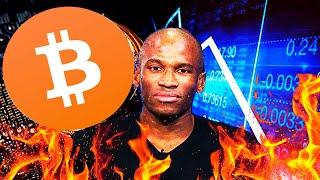
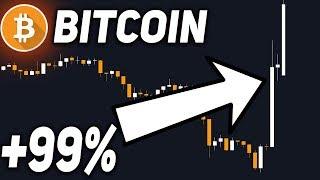


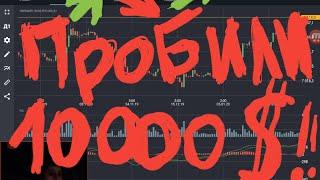


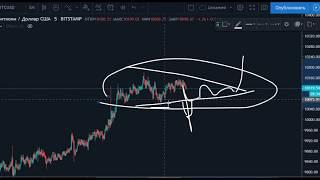
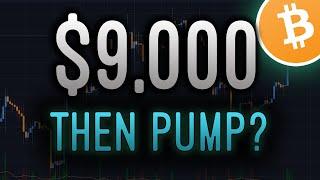

Комментарии